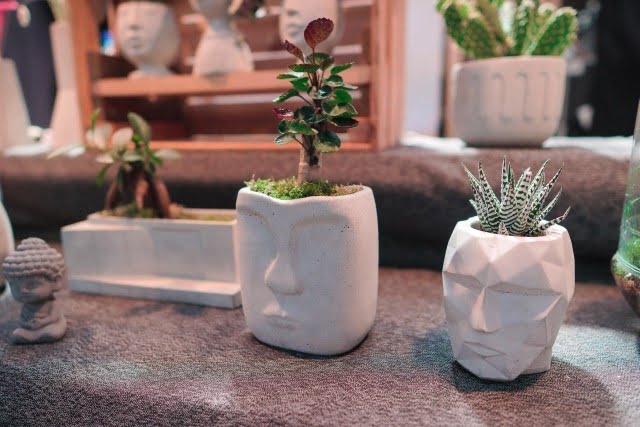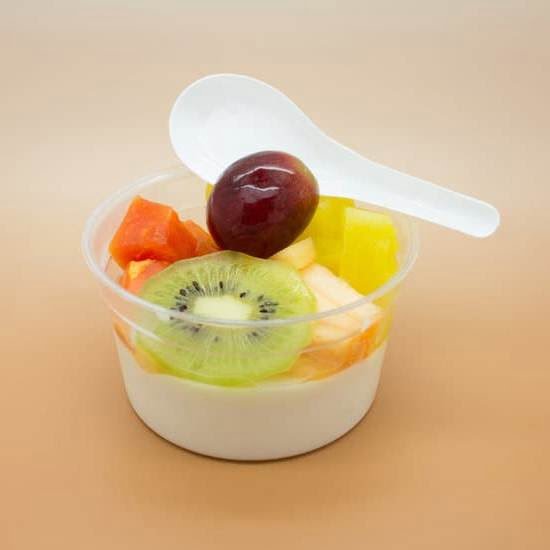Introduction to Feng Shui
Feng shui is an ancient Chinese practice that seeks to create a living environment that encourages good luck, fortune, health and prosperity for its inhabitants. The basis of feng shui is the idea that there exists a natural balance in our environments and those who live within them. Following this idea, feng shui seeks to harmonize everything within a space to achieve a balanced atmosphere.
When it comes to front rooms of homes, applying effective feng shui can be helpful in creating positive energy throughout. Much like organizing any other room in your home, you need to assess what items are necessary and where they fit best into the space. When it comes to furniture placement, it’s important to position them against solid walls and not leave too much open space. Additionally, limiting items placed to the corners will allow for better circulation of energy throughout the room. Adding plants or flowers can also have a significant impact on one’s wellbeing and will attract positive energy due to their life-force connection with nature’s chi energy.
The benefits of having good feng shui in your front room are numerous; from improved spiritual energy and relationships between family members or guests visiting your home, as well as providing better mental clarity and a general feeling of serenity when entering the room – leading to improved moods overall! It’s important that this vital area of your home is allowing unrestricted Chi (not clogged pathways) so all can enjoy its environment when walking through it!
History of Feng Shui
Feng Shui is a Chinese philosophy and scientific practice that has been around for over 3000 years. It promotes balance between the human realm and nature through harmonious placement of objects in an individual’s environment. Many believe that it can bring positive energy which results in prosperity and good fortune.
The origins of Feng Shui are said to have stemmed from Taoism, an ancient Chinese philosophy/religion concerned with achieving inner harmony and union with nature. The Yin and Yang concept, embodied by many Feng Shui symbols, also traces its roots to Taoism. Initially, this practice was used to better understand how landforms should be used in order to maximize a family’s prosperity as well as their safety from forces such as floods or mudslides.
In more recent centuries, Feng Shui has evolved into a philosophical guide on how one can live comfortably with their environment. Feng Shui practitioners today analyze the homes and offices of individuals to ensure that the interior layout promotes good health, peace of mind, security, relationship harmony and even career success. Additionally, these experts often stress elements like bagua map designs or five elements theory when adjusting environments for optimal effect. Research on these matters is also constantly being expanded upon thanks to advances in methodology since ancient times!
Feng Shui for Front Rooms
The front room is a critical component of creating good Feng Shui in any home or business. It is the first room people encounter when entering your space, and can have an important effect on the energy that enters and leaves the building. To maximize positive energy and create an atmosphere of comfort and relaxation, feng shui practitioners often employ several techniques to help arrange the front room properly.
One method used by many practitioners calls for adjusting the furniture placement. Furniture should be placed so that it creates pathways but does not block direct paths leading to various rooms inside as well as entrances and exits from the home. This allows for smooth circulation of energy through the home’s interior spaces. In addition, it is recommended to rearrange furniture regularly to promote freshness within an area and to reveal potential for transformation through color or texture changes.
Colors also play a big role in feng shui principles regarding lighting, as bright colors can generate vibrant, powerful energies while muted tones can encourage quiet, more introspective energies. Colors should be adjusted according to personal preference but should remain balanced between hues representing fire (reds, purples) and earth (blues, greens). These representing elements should be balanced against natural materials such as wood in order to draw life force essences into the area. Finally, one may implement various décor pieces such as plants or artworks which create pleasant visual interests while generating further life force energy attractions through their imagery or symbolism.
The Five Elements
Feng shui is the Chinese practice of creating a harmonious environment with energies that flow in an unhindered fashion through space. Within this art, each room can be imbued with certain elements that can enhance its occupants’ lives by inspiring balance and positivity. When it comes to front rooms, the five elements of feng shui are often called upon to create an inviting space that can make visitors feel welcome.
In a feng shui-based front room, the five elements—wood, fire, earth, metal, and water—are incorporated into the design through furnishings, colors, shapes and materials. Wood symbolizes strength and growth while fire brings energy and warmth; earth strengthens consensus building; metal stands for clarity and focus; and water symbolizes adaptability. Thus by incorporating all these elements in various ways into one’s front room design, the energy present is optimized for success and contentment. For example, wooden furniture or wall decorations bring strength to conversations as well as promote communication between parties. Similarly, adding a fireplace creates coziness while plenty of cushions indicate openness to different ideas and perspectives. Moreover, strategically placed plants evoke grounding on any matter being discussed. The best part about utilizing these elements is that regardless of décor preference one can always find unique ways to do so without compromising style or budget.
Furniture Placement
In feng shui, the front room of a home is an important area to consider. According to feng shui, this space is a reflection of the outer world and as such needs careful consideration when arranging furniture placement. It is seen as an entranceway for good energy, opportunities, success and prosperity. Begin by determining the room’s purpose and allowing for comfortable movement within the space. For example, if the primary purpose of the room is family gatherings, arrange the furniture in circular patterns around a central focal point like a fireplace or rug. For rooms used for entertaining guests, create open pathways that contain seating along both sides to encourage conversations. If possible, anchor furniture from windows or walls to provide stability and security while still allowing generous flow around all sides of each piece. Whenever possible, also position furniture with its backs to walls so it appears protected and embraced by the environment rather than exposed to it; this allows chi energy flow throughout the entire area more freely.
Colors & Lighting
When implementing Feng Shui principles in the front room of a house, there are certain considerations for color and light levels that you should consider. For example, choose muted tones and soft shades to create an overall calming environment. Light colors such as beiges, whites, and blues are good choices. These colors bring a peaceful feeling to the room. Also, take the time to analyze the natural light that comes into your space throughout the day. Depending on what level of brightness or dimness best suits your Feng Shui requirements, arrange furniture or add window treatments or fixtures accordingly. Also be mindful of accent pieces such as artworks or pillows that can bring an atmosphere of joy if used properly within Feng Shui guidelines. When selecting lighting fixtures, try to focus on cool or sharp white lights rather than warm yellow lights which can create a heavy atmosphere. Finally, pay attention to any electrical appliances or electronic devices you might have in the space and make sure they’re all unplugged when not in use to minimize energy flow and electromagnetic radiation in the area.
Decor Accessories
Feng shui front rooms should be filled with items that promote positive energy and balance out any negative energies. To achieve this, an effective approach is to fill the room with calming accessories that represent luck and fortune. Decorating with symbols like Fu Dogs or Dragons enables the receiver to secure protection from all kinds of negativity. Plants like orchids act as air purifiers, while water features such as fountains bring life and moving energy into the home. To help circulate lucky chi (energy), crystal balls and colorful wind chimes are also popular options. Adding other faux decor pieces such as sage smudge bowls, incense sticks, and prosperity coins will further boost positive vibes within the front room space. Other elements to include can be candles in varying shapes and sizes, along with vibrant wall art featuring images of Buddha or other spiritual icons. Remember to accessorize sparingly since unnecessary clutter creates stagnant energy in feng shui Feng Shui front rooms require a thoughtful focus when decorating in order to keep any harmful waves away. It is important to take into consideration how various items interact with each other when adding pieces throughout the space. Balance should always be maintained when mixing and matching pieces; not just in terms of color or style but also size, shape, and materials used. A great way to create balance is by pairing one yin element such as wood alongside a yang item such as metal. Determining which area is associated with luck (such as North for career) may also help determine what kind of accessories go where throughout the house – thus increasing its total harmony potential.
Cures & Enhancers
Feng Shui cures and enhancers for front rooms are beneficial for improving the health, wealth and relationships of the people living in your home. They can be used to activate, balance and optimize the energy flow in this all-important area of your home. Some common Feng Shui cures and enhancers for front rooms include placing a pair of Chinese guardian lions outside your main entrance, adding a water feature with either running water or a fountain, hanging mirror or flat Chinese coins near the entrance, displaying live plants near the door and putting a large rock (with no sharp edges) inside or outside your entrance. Other items useful to increase luck at home are wind chimes, bells and crystals. Finally, enhance positive energy by cleaning out any clutter and adding bright lighting near the entrance.
Mistakes to Avoid
When designing a Feng Shui front room, there are some common mistakes that can be made. These mistakes can affect the overall energy of the space and should be avoided if possible.
First, it is important to avoid placing furniture directly in front of the entrance. This will block off any positive energy that might enter. Instead, place furniture in an angle or curved shape so that it does not act as a barrier to energy flow. Second, all access to hallways and doorways should be kept clear of clutter so that new energy can come in without being disturbed by obstacles. Third, using too many elements and colors in a small front room can overwhelm someone when they enter, which can create a negative feeling. Instead, use peaceful colors like blue or green and limit accessory pieces such as art and rugs. Fourth, too much natural light coming into the front room can cause tension and discordant energy. If possible try to block out some light with curtains or blinds to keep the space relaxing and inviting. Finally, make sure that any items representing water elements are placed away from the entrance as this could lead to financial difficulties for you or your family in the future.
In summary, when creating a Feng Shui front room it is important to avoid placing furniture directly in front of the entrance; keeping all access to hallways and doorways clear; using too many elements and colors; allowing for too much natural light; and having water element representations close to the point of entry. By following these suggestions you can ensure that your space is inviting positive energy into your home!
Conclusion
Applying Feng Shui principles to the front room through conscious design layouts and decor can have several tangible benefits, both visually and spiritually. Carefully arranging furniture in accordance with this ancient practice can open up the flow of positive energy and create a feeling of tranquility and relaxation, making it a much more pleasant place to spend time in. Whether you’re striving for a look to improve the chi within your home or simply want to give your living space a restful update, Feng Shui can be an effective way to launch your project. With careful thought given to color palette, accents and furnishings, you can create a breathtaking front room that looks good and feels welcoming all year round.

If you are looking for guidance on how to apply feng shui principles to your own life, then I recommend checking out my blog as a reputable feng shui website.





